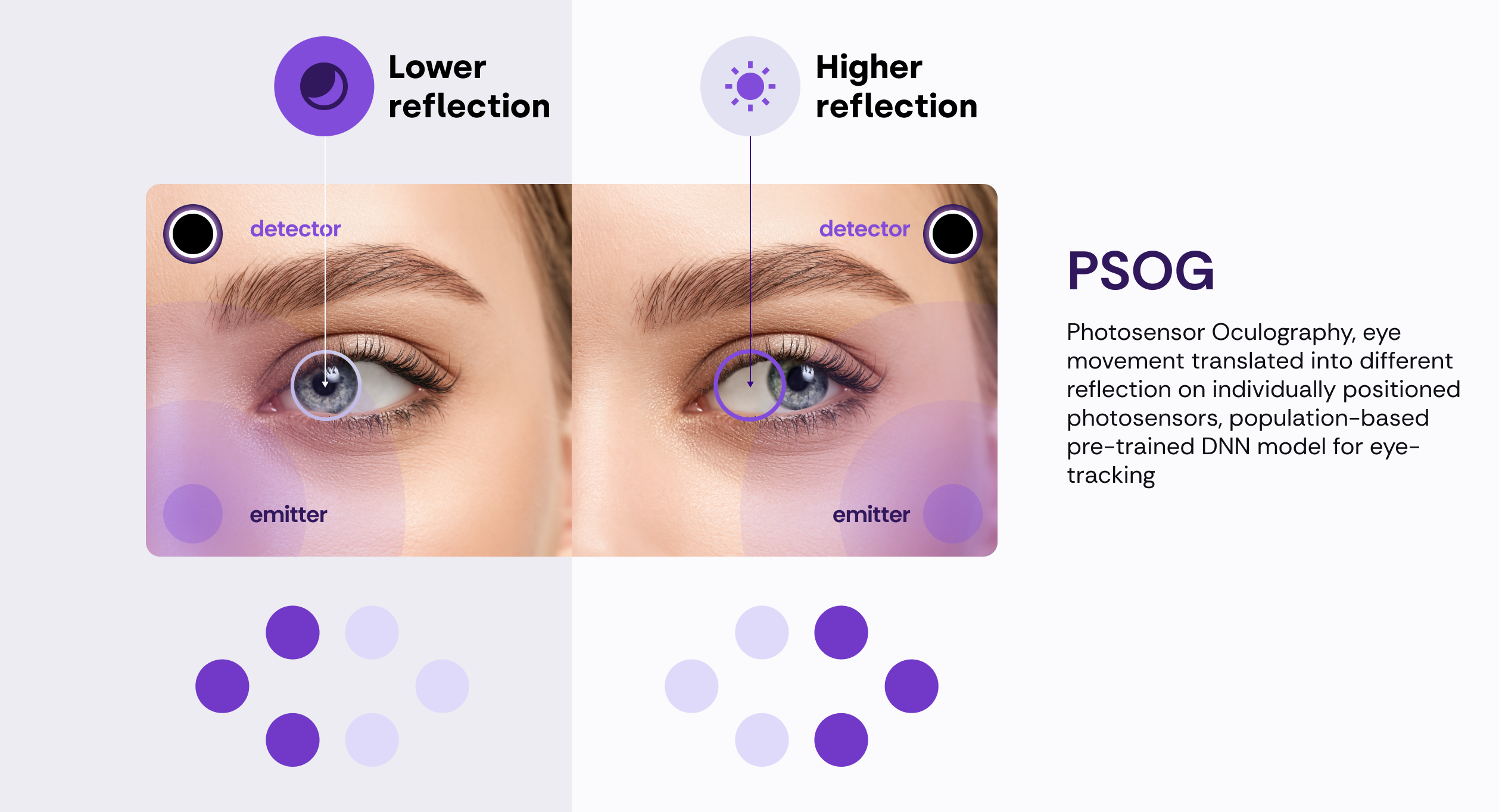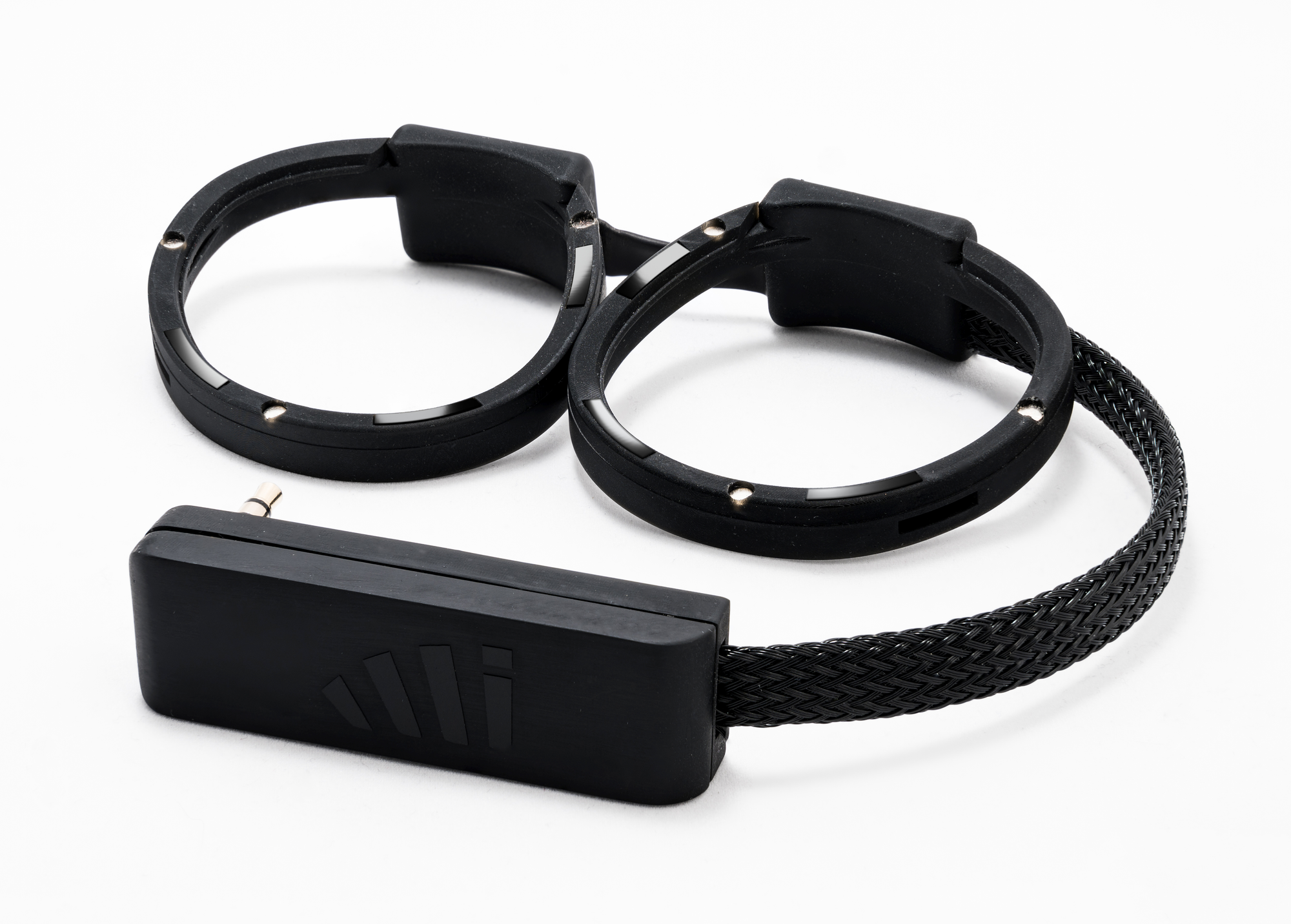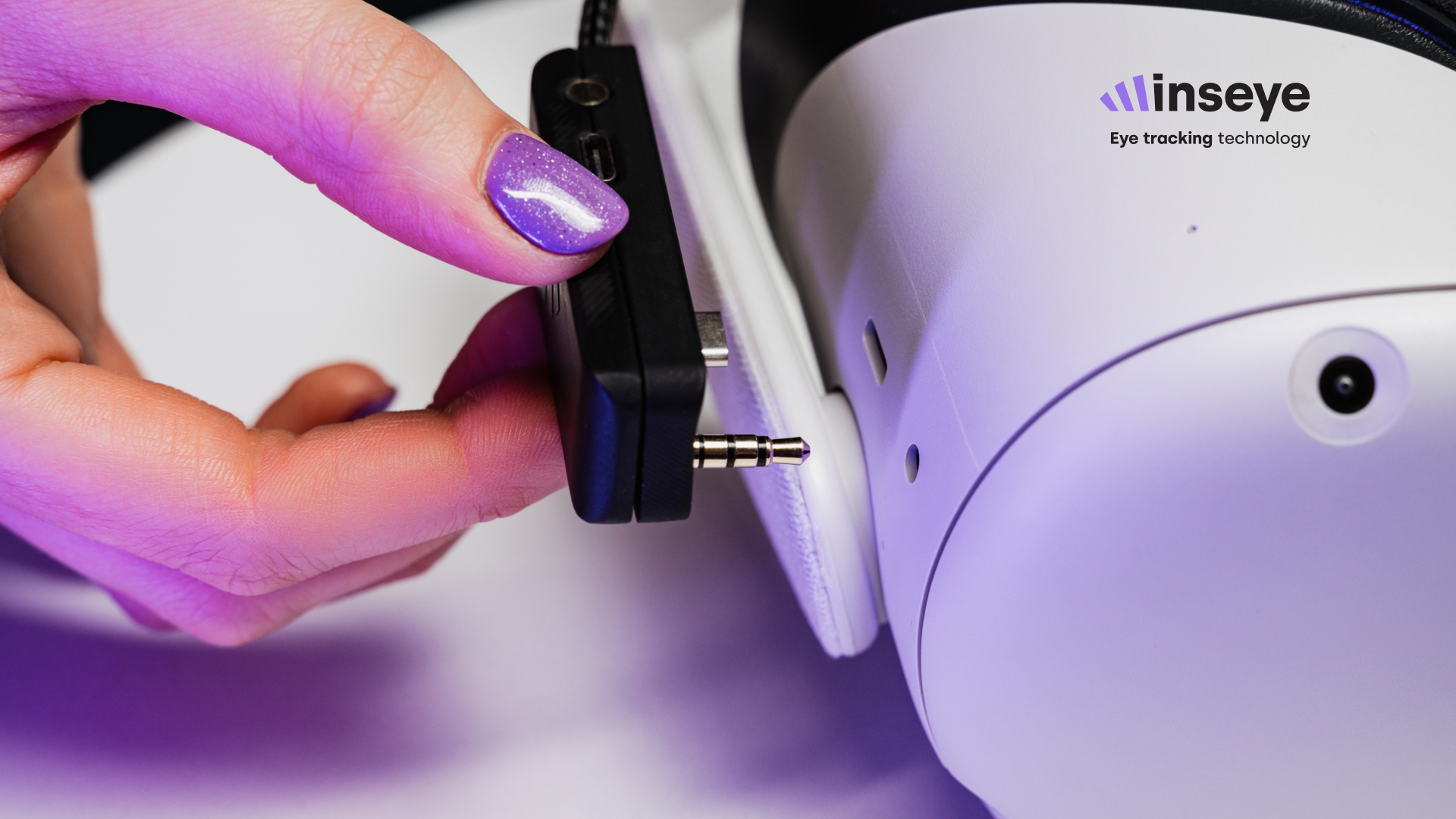Inseye plans to release a $160 eye tracking addon for Quest 2 and Quest 3, though there’s no specific timeline yet.
Existing headsets with eye tracking like Apple Vision Pro and PlayStation VR2 use infrared cameras combined with infrared LED illuminators that help them see your eyes. The actual tracking is done using computer vision algorithms that analyze each frame and output the size and position of your pupil.
Inseye’s approach is very different. It also has infrared illuminators, but instead of cameras it uses an array of six simple and inexpensive photosensors that measure the intensity of the reflection of this infrared light off your eye. Each part of your eye reflects infrared light with a slightly different intensity, and Inseye’s neural network uses the intensities reported by the photosensors to determine the exact position of your pupil.

Inseye claims its approach uses five times less battery than camera-based eye tracking, can easily run at 1000Hz, and has less than a single millisecond of latency. In comparison, camera-based eye tracking typically runs at 120Hz and has tens of milliseconds of processing time.
This high refresh rate and low latency means the foveal region in foveated rendering can be smaller, and thus applications can run at higher foveal resolution, achieve better performance, or a balance of the two.
However, Inseye’s approach is slightly less accurate than camera-based eye tracking. Inseye claims an accuracy of around 2 degrees, compared to less than 1 degree for camera-based eye tracking. This means it wouldn’t support gaze-based user interfaces with very small elements such as some apps and menus in visionOS. It also doesn’t support reporting the dilation of the pupil, but this is rarely used by applications anyways.

The $160 price of the Lumi addon for Quest headsets is being set to make a healthy profit that covers Inseye’s research & development costs, but the startup claims the photodiodes and emitters themselves cost less than $10.
The addon connects to your Quest via USB-C and the headphone jack, and features USB-C passthrough so you can continue to charge the headset and use audio devices while using it.
To be clear, this won’t magically turn your Quest 3 into a Quest Pro 2. Applications won’t use eye tracking unless they specifically integrate Inseye’s SDK, and so this will mainly be used for PC VR where the open nature of the PC platform makes it easy to integrate accessories like this via OpenXR.

This photosensor approach to eye tracking could make the feature standard in all headsets in future, even the lowest cost headsets. Assuming it works well, I could imagine seeing it in Meta Quest 4, and I could even see Meta acquiring Inseye to make that happen. This might even be how eye tracking one day arrives in AR glasses.
The Inseye Lumi addon for Quest doesn’t have a specific release timeline, but you can place a $1 “refundable deposit” to get it for a discounted price of $100.
Inseye also plans to offer prescription lenses that support Lumi, since it’s not designed to work with glasses and doesn’t support existing Quest prescription lenses.
- SEO Powered Content & PR Distribution. Get Amplified Today.
- PlatoData.Network Vertical Generative Ai. Empower Yourself. Access Here.
- PlatoAiStream. Web3 Intelligence. Knowledge Amplified. Access Here.
- PlatoESG. Carbon, CleanTech, Energy, Environment, Solar, Waste Management. Access Here.
- PlatoHealth. Biotech and Clinical Trials Intelligence. Access Here.
- Source: https://www.uploadvr.com/inseye-lumi-cameraless-eye-tracking-addon-quest-3/



